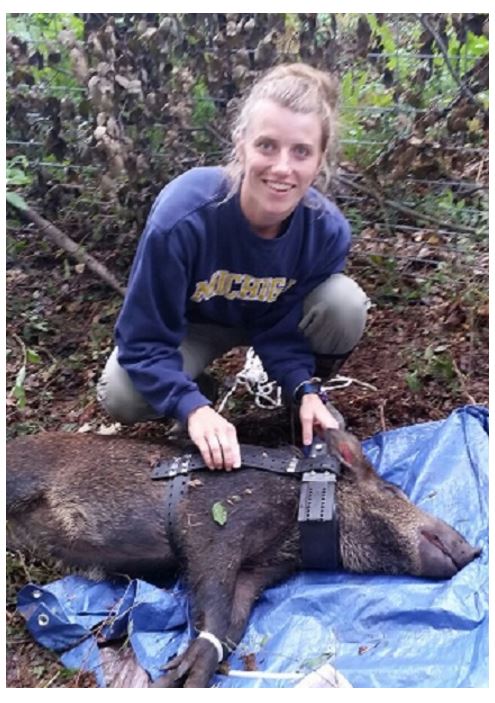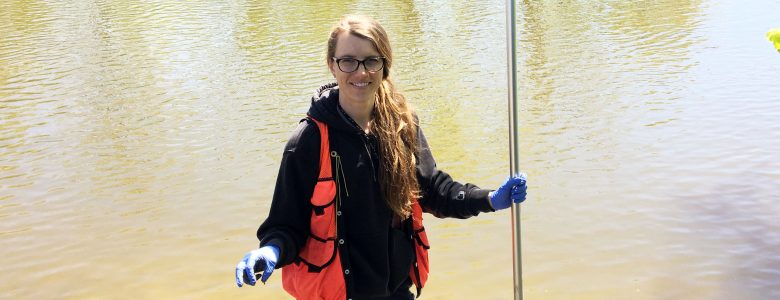Feral Swine Research – Highlight of MS in Biology Student, Amberly Hauger

Amberly in the midst of research
Feral swine. That’s right, wild hogs. They are a bigger problem than you might realize. In numbers, feral swine can cause extensive damage to forests, agricultural lands, and Michigan’s water resources. They can also host many parasites and diseases that threaten humans, domestic livestock, and native wildlife. Thirty years ago, there were no feral swine sightings in Michigan. But human interference and prolific breeding has caused a spread of the non-native animal. By the end of 2011, they had been sighted in 72 of Michigan’s 83 counties.
Fortunately, the State of Michigan is being proactive before it becomes an epidemic like in some southern states. Thanks to a joint collaboration between the Michigan Department of Natural Resources, USDA Wildlife, the University of Michigan-Flint, and Michigan State University, the feral swine problem is being tackled head-on.
Led by MS Biology professor, Dr. Karmen Hollis-Etter, UM-Flint is conducting research and assisting with the capture of invasive feral swine in Michigan. Graduate Student Research Assistant, Amberly Hauger (MS in Biology student), has been able to help in the project by capturing hogs. The feral swine are trapped and anesthetized before being fitted with GPS tracking harnesses. Feral swine are monitored to examine travel routes, bedding sites and habitat use across the landscape and tested for zoonotic diseases. Information gained from this research project will be used to inform management strategies to remove invasive feral swine from Michigan.

Amberly testing for river turbidity
Hauger also conducts regular Environmental DNA (EDNA) tracking in mid-Michigan streams by drifting a hog leg and collecting EDNA at different points downstream. This helps scientists understand how far and in what quantities feral swine DNA can be detected.
“What we’re looking for is called Environmental DNA,” said Hauger. “It’s any DNA shed by an animal from any form, like contact with the water, feces, urine, saliva. DNA shed from their skin naturally. So we use a hog leg and we put it through the water as our DNA source.”
Yes, it’s a real hog leg.
“Right now we can’t distinguish between feral swine and domestic swine. We have domestic hide and domestic feet as well as feral hide and feet. So we create our own,” Hauger said. “Similar studies of EDNA are used to track invasive species such as Asian Carp.”
“Feral swine cause a lot of damage. A lot of rooting. We want to control that before it gets out of control.”
You can read more and watch videos on feral swine by visiting the comprehensive Michigan DNR webpage dedicated to the problem.
More information on the University of Michigan-Flint’s Master of Science in Biology can be found here as well as research being conducted into the Feral Swine project here.
(written by Matt Bohlen)

Amberly with a tagged hog.
